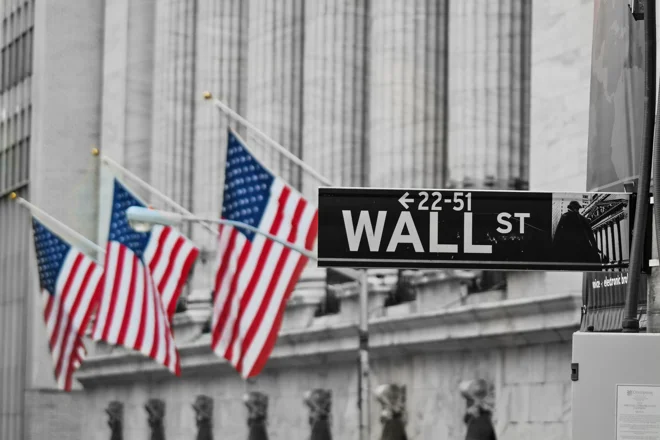Last week, we hosted a special webcast on geopolitics with Daniele Antonucci, our Chief Investment Officer, and Anna Rosenberg, Head of Geopolitics at the Amundi Investment Institute. During the webcast, we received many questions from the audience, but didn’t have time to address them all. We’ve answered them below.
Global
Do you think the US dollar can weaken further, and if so, what does this mean for investors across equities and fixed income?
Yes, we think the US dollar has room to depreciate further. Firstly, the US outlook is increasingly uncertain. The weakness in investor sentiment is being felt in the real economy, although the labour market remains relatively resilient. That said, the revisions to the Q1 US economic growth rate show a much lower contribution from domestic consumption compared to 2024. Recent retail sales data also show a continued slowdown in consumption, as retailers begin to increase some prices following the rise in tariffs.
Secondly, the difference in interest rates in the US and Europe favours the euro. We believe the US Federal Reserve (Fed) will resume cutting interest rates in the second half of this year, although the timing is unclear. Meanwhile, the European Central Bank (ECB) has signalled that, once it lowers the policy rate from the current 2% to 1.75%, its rate-cutting cycle will be over. The lack of clarity from the Fed could lead to some volatility in the foreign exchange market.
Thirdly, US President Trump’s “big, beautiful bill” finally became budget law. While it clears some uncertainty (we know the outcome), it’s hard to gauge its economic impact, specifically whether tax cuts can offset spending cuts. What’s clear is that the fiscal deficit will widen to levels typically seen during a recession or a war, while currently the US economy is simply slowing, not contracting. In any case, a wider deficit is negative for the currency. Lastly, lingering policy uncertainty on trade tariffs (see below) adds another layer of downside pressure to the USD.
Currency movements are crucial for investors, as they significantly impact the performance of the currency in which they invest. Although the S&P 500 equity index is closing at record levels again and is now up 6% this year in US dollar terms, it’s down 7% in euro terms and down about 2% in sterling. As we expect the dollar to weaken further, we’ve reduced our exposure to this currency this year. To do so, we sold some of the US equities we held, which were ‘unhedged’, i.e. not protected against currency movements, and replaced them with US equities that are hedged. On a side note, expectations of a wider fiscal deficit continue to underscore our reduced positioning in US Treasuries.
Will gold continue to act as a safe-haven asset, and can it appreciate further?
We think so. We’ve recently increased our allocation to gold, driven by our expectations of a weaker USD (see above) and solid demand for the precious metal. Indeed, investors, institutional and individual, as well as central banks, are increasingly seeking protection against geopolitical risks, fiscal uncertainty, and unpredictable policy shifts.
Let’s examine the most recent report on reserve management from the Official Monetary and Financial Institutions Forum (OMFIF), an independent and neutral forum for central banking, economic policy, and public investment. Reserves are what central banks hold in their vaults and serve several vital purposes in managing a country’s monetary and financial stability. It’s mostly about maintaining some currency stability, backing the national currency, and providing liquidity during crises. The report shows an increasing need for diversification from central banks. While the USD’s reserve currency status is not yet under threat, central banks are overwhelmingly concerned about geopolitical risks stemming from tariffs and trade protection, i.e. primarily the US policy environment. And so, the dollar is the only currency for which demand has fallen among central banks this year (supporting our negative outlook on the USD), supporting the euro and gold. Both are seen as the main alternative to the dollar in reserves, with the latter surpassing the former as the second most important reserve currency. Central banks’ purchases of gold further reinforce its status as a safe haven. This was further evidenced by gold appreciating around 5% with the rise in tensions in the Middle East.
Europe
How are the Europeans going to finance the increase in defence and infrastructure spending?
European countries are ramping up defence and infrastructure spending in response to rising geopolitical tensions and the need to modernise the industrial ecosystem. In addition, the 28 European NATO members committed last week to increase their defence spending to 5% of GDP (from below 2% previously). To finance these increases, many are reconsidering long-standing fiscal constraints. A notable example is Germany, which has traditionally adhered to a strict “debt brake” enshrined in its constitution, limiting structural budget deficits to 0.35% of GDP. However, faced with the urgency of bolstering defence following Russia’s invasion of Ukraine and addressing critical infrastructure needs, Germany established a €100 billion special fund for its military, circumventing the debt brake.
Additionally, there are ongoing debates within the German government about reforming or temporarily suspending the debt rule to allow more flexible investment in strategic sectors. Other European countries are exploring similar measures, such as issuing green or defence bonds, increasing EU-level funding, or seeking exemptions under EU fiscal rules for certain investments. These shifts reflect a broader recognition that meeting modern security and infrastructure challenges may require more fiscal agility and a departure from the austerity-driven policies of the past decade.
We believe spending will have positive spillovers, not only on sectors related to defence and infrastructure but also on the entire economy, which should support employment, in turn boosting consumer spending. This was the reason we bought European equities earlier this year. From a currency perspective, the increase in spending will likely raise productivity, a renewed tailwind for Europe after years of meagre investment. We expect the euro to have further room to climb against the dollar.
This week
Liberation Day 2.0
While this week is relatively quiet in terms of major data releases, the US Administration plans to announce the tariff rates (and potential deals), which will take effect on 1 August. It is still unclear what the outcome will be for most economies (what tariffs, what rate?) and the deadline extension from the initial date of 9 July, while positive as it will likely allow for further negotiations, remains somewhat tight.
So far, a degree of trade negotiation and tariff dilution has seen a tentative stabilisation in market sentiment, US dollar weakness, rising global financial assets and a delayed knock-on impact on the real economy, which remains relatively resilient. This could continue unless the US hikes tariffs to a significant degree. The constant trickle of on-again, off-again trade deal discussions and counter-tariff announcements could also continue to spur bouts of moderate volatility. For now, only the UK and Vietnam have concluded a deal with the US, while China has agreed to a broad framework. There has been some progress with India, while US negotiations with the EU and Japan, although progressing especially with the former, remain challenging.
Beyond trade policy and tariffs, investors may still be monitoring some key economic releases, including the US Federal Reserve (Fed) minutes relating to its latest meeting (Wednesday). German and French trade data for May (Tuesday) will be followed by Chinese inflation and producer price data (Wednesday), and on Friday UK GDP data for May (expected down -0.3% MoM), industrial production and the trade balance – while the bond market focus in the UK might remain on budget concerns if the austerity measures are relaxed.





